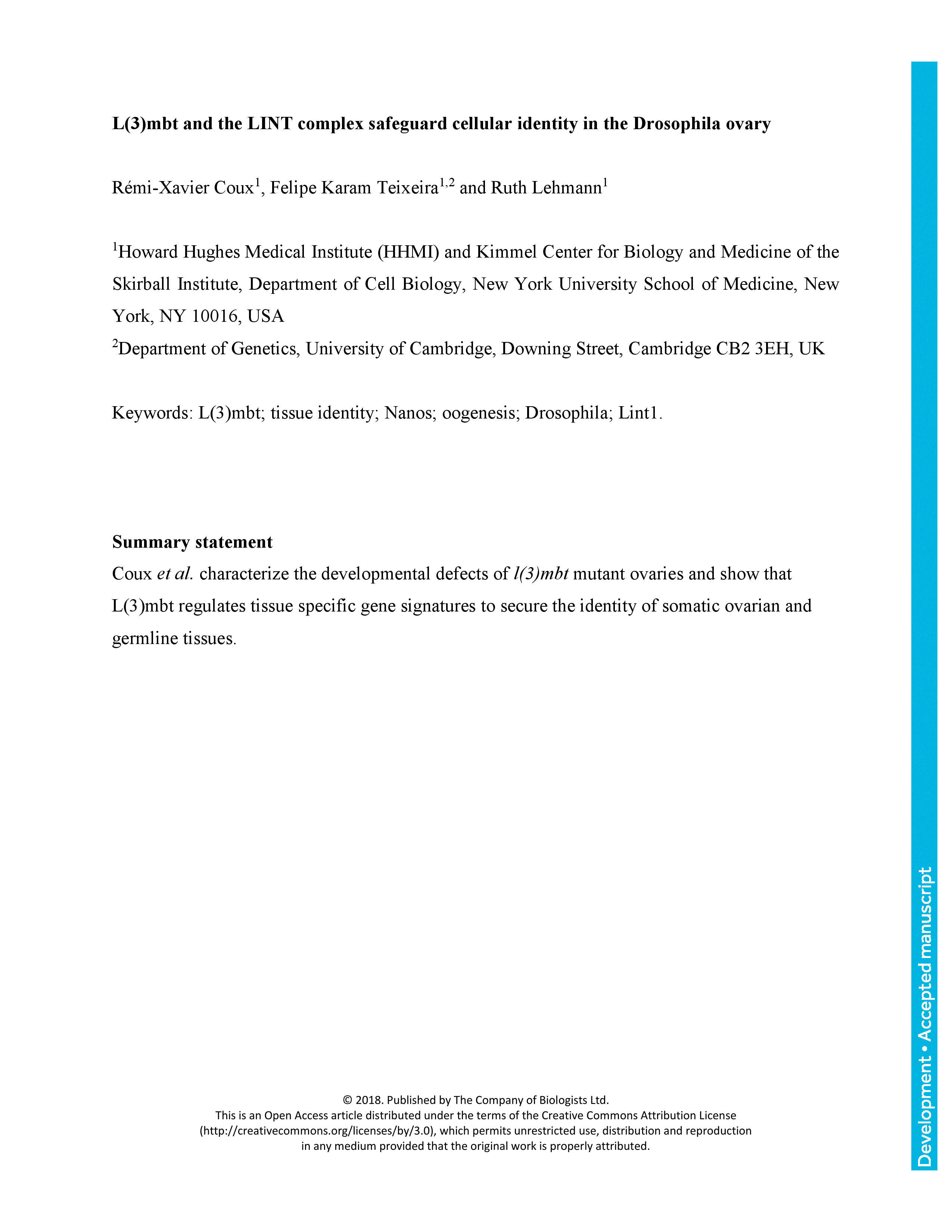Maintenance of cellular identity is essential for tissue development and homeostasis. At the molecular level, cell identity is determined by the coordinated activation and repression of defined sets of genes. The tumor suppressor L(3)mbt was shown to secure cellular identity in Drosophila larval brains by repressing germline-specific genes. Here we interrogate the temporal and spatial requirements for L(3)mbt in the Drosophila ovary, and show that it safeguards the integrity of both somatic and germline tissues. L(3)mbt mutant ovaries exhibit multiple developmental defects, which we find to be largely caused by the inappropriate expression of a single gene, nanos, a key regulator of germline fate, in the somatic ovarian cells. In the female germline, we find that L(3)mbt represses testis-specific and neuronal genes. Molecularly, we show that L(3)mbt function in the ovary is mediated through its cofactor Lint1 but independent of the dREAM complex. Together, our work uncovers a more complex role for L(3)mbt than previously understood and demonstrates that L(3)mbt secures tissue identity by preventing the simultaneous expression of original identity markers and tissue-specific misexpression signatures.
L(3)mbt and the LINT complex safeguard cellular identity in the Drosophila ovary
Currently Viewing Accepted Manuscript - Newer Version Available
Rémi-Xavier Coux, Felipe Karam Teixeira, Ruth Lehmann; L(3)mbt and the LINT complex safeguard cellular identity in the Drosophila ovary. Development 2018; dev.160721. doi: https://doi.org/10.1242/dev.160721
Download citation file:
Advertisement
Call for papers: Uncovering Developmental Diversity

Development invites you to submit your latest research to our upcoming special issue: Uncovering Developmental Diversity. This issue will be coordinated by our academic Editor Cassandra Extavour (Harvard University, USA) alongside two Guest Editors: Liam Dolan (Gregor Mendel Institute of Molecular Plant Biology, Austria) and Karen Sears (University of California Los Angeles, USA).
Choose Development in 2024

In this Editorial, Development Editor-in-Chief James Briscoe and Executive Editor Katherine Brown explain how you support your community by publishing in Development and how the journal champions serious science, community connections and progressive publishing.
Journal Meeting: From Stem Cells to Human Development

Register now for the 2024 Development Journal Meeting From Stem Cells to Human Development. Early-bird registration deadline: 3 May. Abstract submission deadline: 21 June.
Pluripotency of a founding field: rebranding developmental biology

This collaborative Perspective, the result of a workshop held in 2023, proposes a set of community actions to increase the visibility of the developmental biology field. The authors make recommendations for new funding streams, frameworks for collaborations and mechanisms by which members of the community can promote themselves and their research.
Read & Publish Open Access publishing: what authors say

We have had great feedback from authors who have benefitted from our Read & Publish agreement with their institution and have been able to publish Open Access with us without paying an APC. Read what they had to say.



